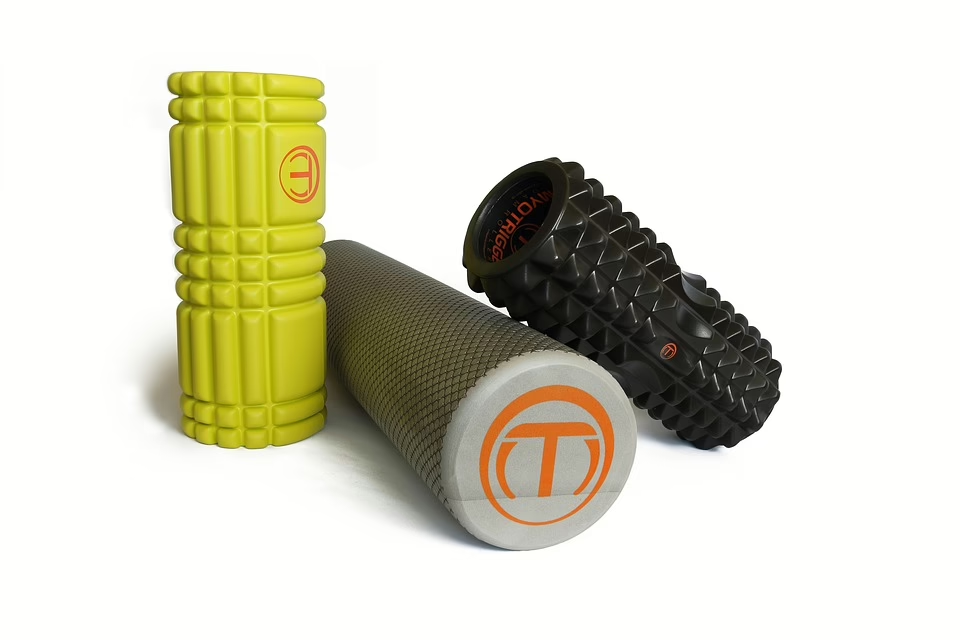From Pain to Freedom: Mastering Trigger Point Therapy
Introduction
Pain is a universal experience, yet the way we perceive and respond to it can vary tremendously from one individual to another. Chronic pain, in particular, can be debilitating, affecting quality of life, mobility, and emotional well-being. In the quest for relief, many have turned to an array of methods ranging from pharmaceuticals to physical therapy. One increasingly popular approach is Trigger Point Therapy (TPT), a technique that targets specific areas in muscles known as trigger points. This article delves into the world of TPT, exploring its principles, techniques, and the transformative power it can have in moving from pain to freedom.
Understanding Trigger Points
What Are Trigger Points?
Trigger points are hyperirritable spots located within a taut band of skeletal muscle or fascia. They are often associated with muscle knots and can cause localized pain or referred pain—pain that is felt in a different part of the body. For instance, a trigger point in the shoulder may result in discomfort in the neck or head, often mimicking tension-type headaches or migraines.
Causes of Trigger Points
Trigger points can develop due to a variety of reasons, including but not limited to:
- Repetitive Movement: Frequently performing the same motion can strain muscles.
- Poor Posture: Extended periods in awkward positions can lead to muscle tightness.
- Trauma: Injuries, including strains and sprains, can create trigger points.
- Stress: Emotional and psychological stress can cause muscle tension, contributing to the formation of trigger points.
- Dehydration and Nutritional Deficiencies: Lack of essential nutrients can impair muscle function.
Types of Trigger Points
There are primarily two types of trigger points:
- Active Trigger Points: These are painful even when the muscle is at rest and can produce referred pain.
- Latent Trigger Points: These may not cause pain without pressure but can limit the range of motion and lead to overall muscle dysfunction.
The Science Behind Trigger Point Therapy
Physiological Basis
Trigger Point Therapy is rooted in understanding the body’s myofascial system—the interconnected network of muscles and connective tissue. By applying pressure to trigger points, the goal is to relax taut muscle fibers, improve blood flow, and reduce muscle tension. This can restore normal muscle function and alleviate pain.
Recent studies have illustrated how trigger points not only produce localized pain but can also influence the nervous system’s pain response, indicating that addressing them can lead to broader implications for overall pain management and recovery.
The Role of the Nervous System
The central nervous system plays a key role in pain perception, and trigger points have been shown to affect the nervous system’s sensitivity. By stimulating these points, TPT may trigger a cascade of neurological responses that promote relaxation, tension release, and improved overall well-being. This is supported by research indicating the efficacy of manual therapies in modulating pain perception and enhancing muscle function.
Mastering Trigger Point Therapy
Preparing for Treatment
Before beginning TPT, it is essential to prepare adequately. Consider the following steps:
- Consultation: Seek the advice of a healthcare professional to determine if TPT is appropriate for your condition.
- Myofascial Assessment: A thorough assessment of muscle function, posture, and movement patterns is crucial.
- Education: Understanding the underlying principles of TPT empowers individuals to take an active role in their healing journey.
Techniques for Trigger Point Therapy
TPT can be performed by trained therapists or practiced at home. Here are some commonly used techniques:
-
Manual Pressure: Use fingers, knuckles, or a massage tool to apply direct pressure on the trigger point. Maintain pressure for 30 seconds to 2 minutes.
-
Stretching: Follow pressure application with gentle stretching of the affected muscle. This can enhance the release of the trigger point and improve range of motion.
-
Dry Needling: A technique performed by trained practitioners, dry needling involves inserting thin needles into trigger points to elicit a muscle relaxation response.
-
Foam Rolling: Self-myofascial release using foam rollers helps apply pressure to larger muscle groups and can effectively target specific trigger points.
-
Heat and Cold Therapy: Applying heat before a session can help relax muscles, while cold therapy afterward can reduce inflammation.
Self-Care Tips
To maximize the benefits of TPT, consider these self-care strategies:
- Stay Hydrated: Adequate hydration supports muscle function.
- Maintain Good Posture: Be mindful of your posture throughout daily activities.
- Regular Stretching: Incorporate regular stretching routines to prevent muscle tightness.
- Monitor Stress Levels: Engage in stress-reducing activities such as yoga, meditation, or breathing exercises.
Transformative Benefits of Trigger Point Therapy
Pain Relief
One of the most immediate benefits reported by individuals undergoing TPT is relief from chronic and acute pain. By targeting specific trigger points, TPT helps reduce muscle tension and inflammation, offering a natural alternative to painkillers.
Improved Mobility
Many individuals experience enhanced mobility and range of motion after TPT, allowing them to engage more freely in daily activities. This improvement can lead to increased physical activity, contributing to overall health and wellness.
Emotional Well-being
Chronic pain often takes an emotional toll, leading to anxiety and depression. As TPT alleviates physical discomfort, many individuals report improved emotional health, better sleep, and a greater sense of overall well-being.
Empowerment and Self-awareness
Learning TPT techniques instills a sense of empowerment in patients, enabling them to take charge of their pain management. This self-awareness is crucial in fostering a proactive approach to health.
Case Studies and Testimonials
Real-life Examples
-
Sarah’s Story: After suffering from chronic neck pain for years, Sarah discovered TPT. Through regular sessions with a practitioner and self-application techniques at home, she reported a significant reduction in pain and an improvement in her daily activities.
-
John’s Journey: An avid runner, John developed debilitating shin pain that threatened to end his running career. Through TPT, he identified trigger points in his calves and shins. With consistent therapy and modifications to his training regimen, John returned to running pain-free.
The Future of Trigger Point Therapy
Growing Popularity
As more individuals seek holistic approaches to pain management, TPT is gaining traction among healthcare providers and patients alike. Its non-invasive nature and emphasis on self-care align well with contemporary wellness philosophies.
Integration with Other Modalities
TPT can be effectively combined with other therapeutic practices such as chiropractic care, acupuncture, and physical therapy. This multi-modal approach can lead to a more comprehensive pain management strategy and contribute to longer-lasting results.
Research and Evidence-Based Practice
Ongoing research is critical in establishing the efficacy of TPT and its role in broader pain management protocols. Future studies will help solidify its place in clinical settings, offering evidence-based solutions for various conditions.
Conclusion
The journey from pain to freedom is deeply personal, yet universally sought after. Trigger Point Therapy offers a pathway to healing that emphasizes understanding, self-awareness, and active participation in pain management. By mastering TPT, individuals can reclaim their lives, moving beyond pain into a renewed sense of freedom and well-being.
References:
[1] Travel, J.G. & Simons, D.G. (1999). Myofascial Pain and Dysfunction: The Trigger Point Manual. Vol 1: The Upper Body. Lippincott Williams & Wilkins. [2] Fernández-de-Las-Peñas, C., & Simons, D.G. (2018). Understanding Trigger Points: An Overview of Finding and Treating Myofascial Pain. Current Pain and Headache Reports, 22(5), 1-7. [3] Hong, C.Z. (2000). Myofascial Trigger Points: Pathophysiology and Evidence-Informed Diagnosis and Management. Pain Management, 50(6), 1109-1151. [4] Cummings, T.M., & White, A.R. (2000). The Use of Trigger Point Therapy in Physical Therapy Practice: A Systematic Review. Physical Therapy Reviews, 5(1), 27-40. [5] Cheung, J., & Kutch, J.J. (2015). The Role of Trigger Points in Pain Syndromes: What Clinicians Should Know. Clinical Journal of Pain, 31(9), 835-845.Feel free to modify or expand upon any section as necessary!


























Add Comment